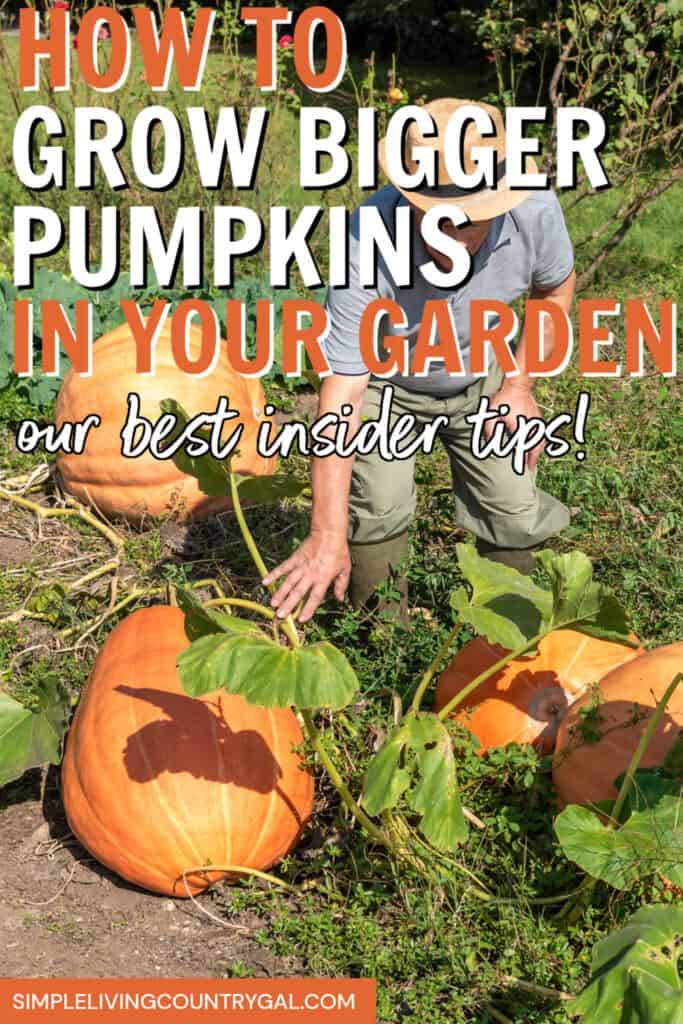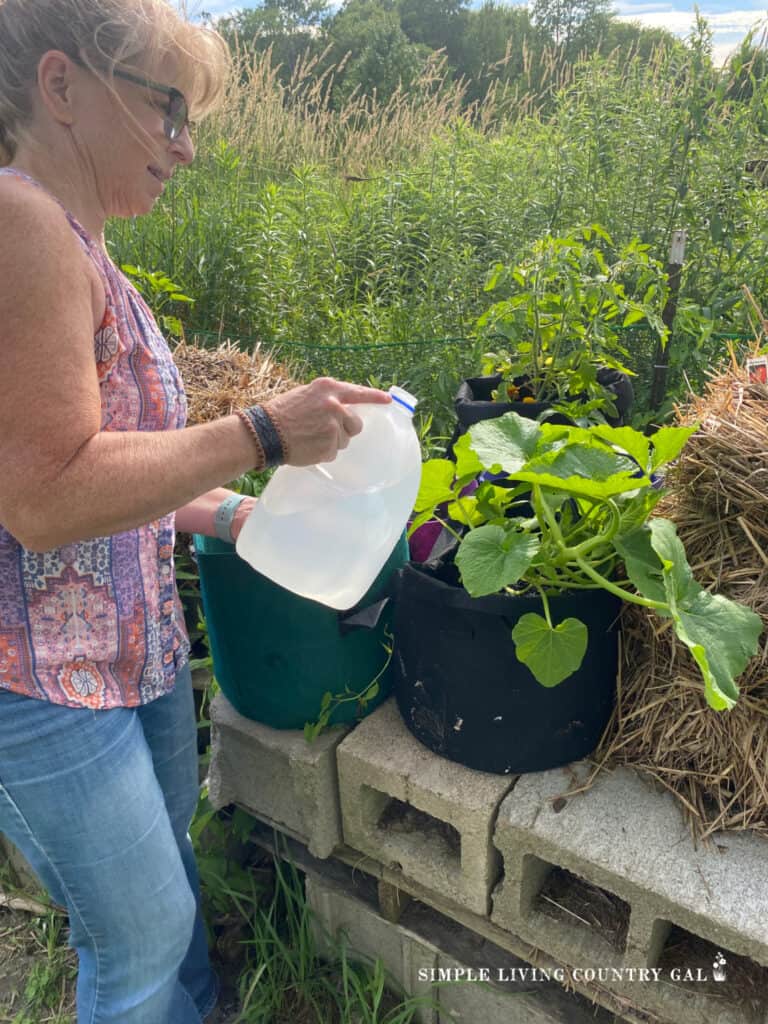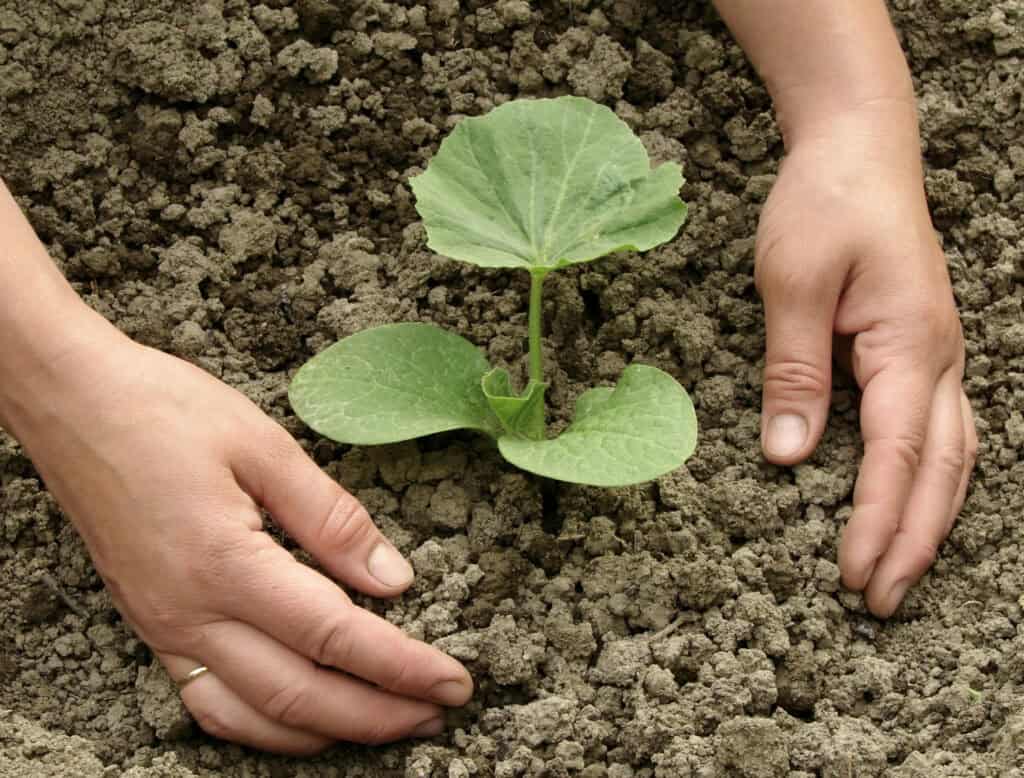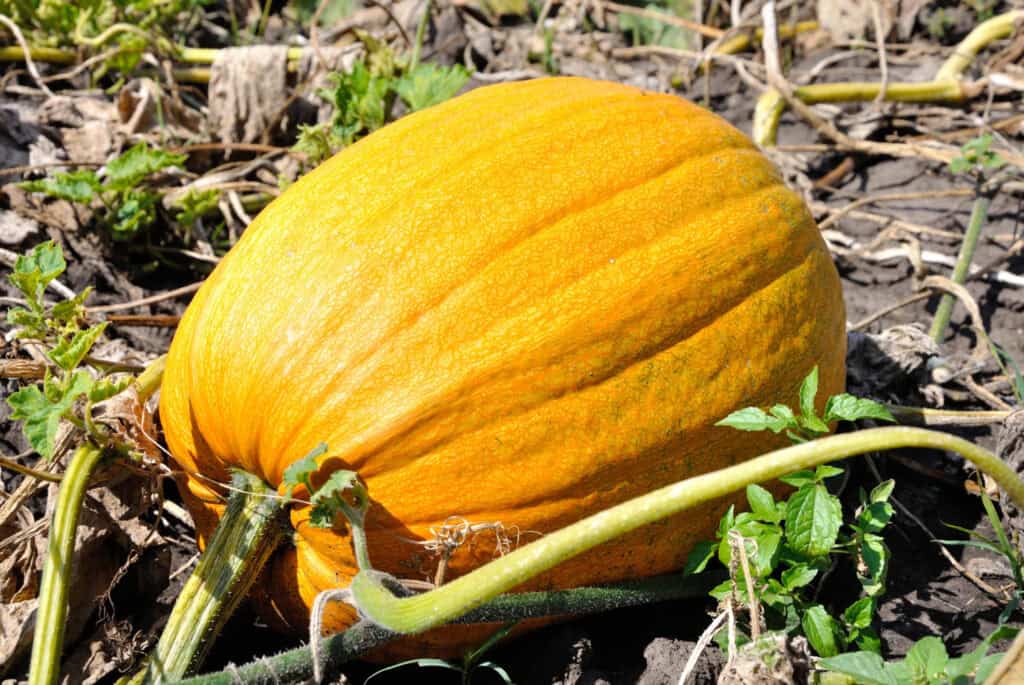pumpkin growing tips
This guide will give you our best pumpkin growing tips so you can grow big, round, and vibrant pumpkins in your backyard garden. From Jack o’lanterns to baking, these tips will help you grow a healthy harvest.
Gardening 101 tips that you can use to ensure your pumpkin harvest is one your neighbors will envy.

As summer winds down, thoughts turn to fall, and one of the biggest symbols for fall is pumpkins.
From the minis you can use to decorate a table to the ginormous ones you see at a fair, pumpkins will help anyone get into the fall spirit.
How Many Pumpkins Per Plant
On average, a healthy pumpkin plant can produce anywhere from two to five pumpkins during a growing season, depending on the variety you are growing and the weather where you live.
- Standard pumpkins – 2-5 per plant
- Giant pumpkins – 1 per plant
- Mini pumpkins – 12 per plant
Get all our best tips on planting, pruning, and harvesting here: How to Grow Pumpkins for Beginners.
Pumpkin Growing Tips
Not all pumpkins do well, and the variety that grew well for you last year may not do the same this year. Luckily, there are things you can do to increase your pumpkin growing success. Things you can do at planting, tips for better watering, pruning tips, and more.
Planting Tips
• Choose the right location: Pumpkins need full sun, rich soil, and plenty of space to grow. Choose a spot in your garden that receives at least 6 hours of direct sunlight per day and more. The more sunshine you have throughout the day, the bigger your pumpkins will grow.

• Prepare the soil: Before planting, add compost or manure to your soil to provide the best environment for your pumpkin plants. Sandy soil is best with a pH of 6.0-6.8.
• Plant seeds directly in the ground: Pumpkin seeds should be planted about one inch deep into the soil, with two or three seeds per hill (a group of plants grown together). If you live in an area where the growing season is short, you can use seedlings instead of seeds.
Watering Tips
• Water deeply but infrequently: Pumpkins need consistent watering, but too much water can lead to disease and rot. Water deeply once a week, and be sure to water in the mornings. An inch of water is suggested to allow the soil to dry out between waterings.
You may want to water again if you have a very hot afternoon. Be consistent with your waterings, especially when the fruit is developing.

• Avoid getting leaves wet: When watering, try to keep the water at the base of the plant and avoid getting the leaves wet as this can lead to disease.
• Mulch around plants: Adding a layer of mulch around your pumpkin plants can help retain moisture in the soil and cut down on weed growth. We like to use straw for mulching and will even put a layer under the pumpkins as they grow.
Pruning Tips
• Pinch off flowers early in the season: To grow bigger pumpkins, pink off any female flowers (ones with small pumpkins at the base) early in the season. This allows the plant to focus its energy on growing larger pumpkins.
• Remove damaged or diseased leaves: Regularly check your pumpkin plants for any signs of disease and remove affected leaves to prevent further spread. I like top check my plants at each water so I can catch issues before they get out of hand.
• Prune for air circulation: Pruning back some of the leaves can help improve air circulation and reduce the risk of fungus while promoting healthy growth.
Additional Tips
• Rotate crops: To avoid depleting nutrients in a specific garden area, it’s important to rotate where you plant your pumpkins each year.
Read our guide on How to Rotate Crops in a backyard garden for more tips.
• Harvest at the right time: The best time to harvest pumpkins is when they have reached their full color, and the vines look brown and dry. Just remember that once you pick a pumpkin, it is done growing. That means the color it is when you harvest is the color it will be.
• Keep pests away: To prevent pests from eating or damaging your pumpkin plants, consider using natural deterrents such as coffee grounds or diatomaceous earth around the base of the plants.
Growing pumpkins is a fun project for families, and it’s a great way to get kids involved in the family garden.
How to Grow Bigger Pumpkins
There are a few bonus tips that you can use to grow really big pumpkins. Here are a few from the experts.
#1. Choose the right variety: There are certain varieties of pumpkins that are known for producing larger fruits, such as Atlantic Giant or Big Max.
Canailles, 10-Pack Atlantic Giant Pumpkin Seeds, Huge Pumpkins Start Here, Made in The USA

#2. Sun is the most important part of growing large pumpkins. Be sure you choose a spot that gets consistent sun throughout the day. Be sure there is plenty of space to grow. This will help reduce the competition for nutrients.
#3. Be sure there is plenty of space to grow. This will help reduce the competition for nutrients.

#4. Use continuous plant food or make your own fertilizer if you have a large pumpkin patch. Fertilize with 2 pounds nitrogen, 3 pounds phosphorus, and 6 pounds potash for every 1,000 square foot area.
#5. Prune away pumpkins so you only have 1-2 per plant. This will ensure all the energy is going to those pumpkins helping them to grow bigger.
#6. Old farmers may tell you that coffee grounds will help your pumpkins grow larger. You can sprinkle them directly around the plants or make a liquid feed by adding water. The coffee will give a boost of nitrogen and may even help keep slugs away.
#7. Water consistently. Pumpkins need lots of water, and to ensure they are getting enough without overwatering, you can use a soaker hose or an irrigation kit.

#8. Water correctly. Be sure to put your water at the base of the plant and avoid getting the leaves wet. Damp leaves can increase the risk of disease.
#9. Another gardener’s tip is to put sand under the pumpkin to help it grow more easily.
#10. Protect from extreme temperatures: Pumpkins thrive in warm weather but are sensitive to extreme heat.
Growing large pumpkins can be fun for not only you but your entire family! By selecting the right variety, ensuring you have loads of sunshine, and managing water and nutrients effectively, you can grow an impressive harvest this season.
Keep these pumpkin growing tips in your garden binder so you can refer to it every spring.



